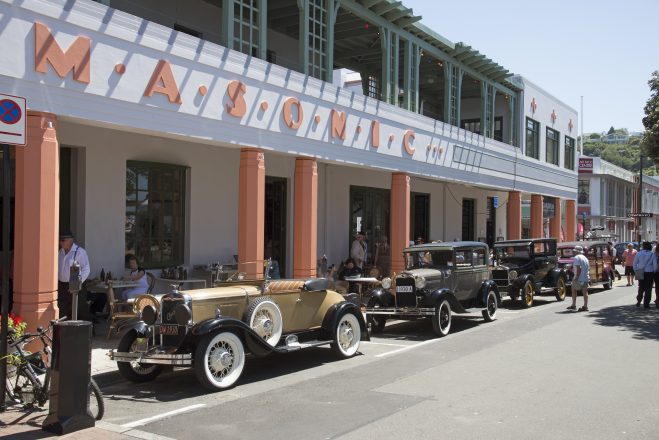Chào mừng bạn đến với thủ đô Art Deco của thế giới. Bộ sưu tập phong phú của tòa nhà Art Deco của Napier đã giành được danh hiệu này, mang lại cho thành phố một phong cách độc đáo và thu hút hàng ngàn khách du lịch mỗi năm, đặc biệt là trong Lễ hội Art Deco nổi tiếng.
Năm 1931, New Zealand phải chịu một trong những thảm họa thiên nhiên chết chóc nhất của nó khi một trận động đất cường độ 7,8 làm rung chuyển vịnh Hawke’s. Trận động đất tàn phá khu vực, giết chết 256 người, làm bị thương hàng ngàn nữa và san bằng thành phố Napier.
Khi CBD được xây dựng lại, nhiều tòa nhà đã được trả lại theo phong cách Art Deco ban đầu của họ – một cách tiếp cận có nguồn gốc từ châu Âu, đạt đỉnh điểm phổ biến trong những năm 1930. Các chủ đề thiết kế bao gồm sunbursts, đài phun nước, hình dạng hình học, hình dạng nhà chọc trời, và các biểu tượng của tốc độ, sức mạnh và chuyến bay. Bạn cũng có thể tìm thấy một số tòa nhà theo phong cách Art Deco trong Hastings.
Những năm Art Deco là thời điểm lạc quan, chủ nghĩa duy tâm, và chủ nghĩa trốn thoát, tất cả đều được thể hiện trên các tòa nhà của Napier và trong hiện thân của địa phương về thời đại.
Tham gia một tour du lịch có hướng dẫn bằng chân, xe hơi cổ điển hoặc xe buýt để xem các ví dụ tốt nhất về các tòa nhà Art deco trên thế giới và tìm hiểu những câu chuyện đằng sau những người tham gia xây dựng lại thành phố. Để thực sự trải nghiệm thời gian sôi động này, hãy tham gia Lễ hội Art Deco hàng năm – một lễ kỷ niệm mang tính biểu tượng được tổ chức trong một tuần vào tháng Hai. Hàng ngàn người đổ xô đến Napier mỗi năm cho lễ hội nổi tiếng này tự hào có hơn 300 sự kiện, bao gồm các bài học khiêu vũ, dã ngoại, bữa tối, bóng, các cuộc thi nướng bánh, biểu diễn đường phố, màn hình thể dục nhịp điệu và nhiều hơn nữa.




























































